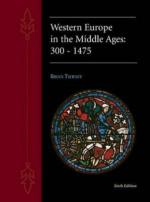|
This section contains 191 words (approx. 1 page at 300 words per page) |

|
The German leadership recognized the need for administrative structure on the Roman model if they were to rule large numbers of subjects settled over enormous territories. One of the first of the successor states, the Ostrogothic kingdom of Italy, established the model for maintaining the Roman tradition of government. The Ostrogoths, whose homeland was in eastern Europe, were one of the largest of the barbarian tribes. Under the leadership of their king, Theodoric (493–526), the Ostrogoths gained control of the entire Italian peninsula. Theodoric then proceeded to create a synthesis of Ostrogothic and Roman practices in his governance of Italy. While the Ostrogoths were governed by their own customs, the Italian population lived under Roman law administered by Roman officials. For the most part, however, the Roman administrative system was kept intact. Another Gothic tribe, the Visigoths, established their own kingdom in Spain. Like the Ostrogoths...
|
This section contains 191 words (approx. 1 page at 300 words per page) |

|




